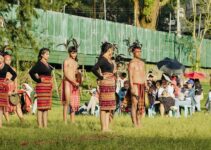Do you ever wonder what policies shape Native Canadian political parties? Well, they are not just about a few minor issues. In fact, they are deeply rooted in historical land claims, Indigenous education reform, environmental protection, healthcare access, economic development, self-governance, and cultural preservation. These policies are crucial in shaping the agendas and platforms of Native Canadian political parties, reflecting the unique needs and aspirations of Indigenous communities across the country.
Key Takeaways
- Treaty negotiations and historical land claims have influenced the government's approach to resource management and the relationship between Indigenous communities and the government.
- Indigenous education reform aims to enhance funding, develop culturally relevant curriculum, and revitalize Indigenous languages to empower Indigenous communities and foster a strong sense of identity and belonging among Indigenous students.
- Environmental protection, stewardship, and sustainable development are prioritized by Native Canadian political parties, with a focus on integrating traditional knowledge, preserving natural ecosystems, and responsible use of natural resources.
- Indigenous healthcare access and community wellness are critical priorities, with a focus on addressing healthcare disparities, promoting culturally competent care, and implementing community wellness programs tailored to Indigenous cultural values.
Historical Land Claims
Exploring historical land claims is essential for understanding the policies that shape Native Canadian political parties. Treaty negotiations and government relations have played a pivotal role in the historical land claims of Indigenous peoples in Canada. These negotiations have influenced the government's approach to resource management and have had a significant economic impact on Indigenous communities.
Treaty negotiations have been a cornerstone of historical land claims for Indigenous peoples in Canada. The agreements made during these negotiations have not only defined the relationship between Indigenous communities and the government but have also set the stage for future interactions and policies. Government relations, stemming from these negotiations, have shaped the political landscape for Native Canadian political parties, influencing their policies and priorities.
Furthermore, historical land claims have had a profound impact on resource management and the economic well-being of Indigenous communities. The control and ownership of land and resources have been central to these claims, directly impacting the economic development and sustainability of Indigenous peoples.
Understanding the complexities of historical land claims is crucial for comprehending the evolution of Native Canadian political parties and the policies that continue to shape their agendas and initiatives.
Indigenous Education Reform
Indigenous education reform significantly impacts the policies and priorities of Native Canadian political parties, shaping their agendas and initiatives. The commitment to enhance education funding and develop culturally relevant curriculum reflects the recognition of the pivotal role education plays in empowering Indigenous communities. Additionally, initiatives for indigenous language revitalization and cultural integration are integral components of the education reform agenda. These efforts are aimed at preserving and promoting Indigenous languages and cultures, fostering a strong sense of identity and belonging among Indigenous students. The table below provides a visual representation of the key areas addressed in Indigenous education reform:
| Indigenous Education Reform | Description |
|---|---|
| Education Funding | Increasing resources for Indigenous education |
| Curriculum Development | Designing culturally relevant educational content |
| Indigenous Language Revitalization | Preserving and promoting Indigenous languages |
Environmental Protection and Stewardship
You prioritize environmental protection and stewardship in your policy-making efforts as Native Canadian political parties. Recognizing the vital role of traditional knowledge in environmental conservation, you are committed to integrating indigenous wisdom into your resource management strategies. Your policies emphasize the preservation of natural ecosystems and the responsible use of natural resources, aligning with the deep-rooted connection to the land and the traditional practices of Indigenous communities.
Incorporating traditional knowledge into environmental policies allows for a holistic approach to resource management. By acknowledging the expertise of Indigenous peoples in understanding and nurturing the environment, you can develop sustainable practices that benefit both the ecosystem and the communities that depend on it. Your focus on resource management is aimed at ensuring that natural resources are utilized in a way that maintains ecological balance and respects the interconnectedness of all living beings.
Indigenous Healthcare Access
Improving healthcare access for Native Canadians is a critical priority for our political party. Addressing healthcare disparities and ensuring cultural competency within healthcare systems are essential steps. We are committed to working with Indigenous communities to enhance access to quality care while respecting traditional healing practices.
To bridge healthcare disparities, our party advocates for culturally competent care that acknowledges and incorporates Indigenous beliefs and practices. This approach fosters trust and understanding, ultimately improving healthcare outcomes for Native Canadians. Additionally, promoting community wellness programs tailored to Indigenous cultural values and traditions is crucial. By integrating traditional healing practices into healthcare services, we can better support the holistic well-being of Indigenous peoples.
Our party recognizes the importance of collaborating with Indigenous leaders and healthcare professionals to implement policies that prioritize Indigenous healthcare access. By championing initiatives that respect and incorporate traditional healing practices, we aim to create a more inclusive and effective healthcare system for Native Canadians.
Economic Development Initiatives
To further support Native Canadian communities, prioritize economic development initiatives that foster sustainable growth and prosperity. Business partnerships play a crucial role in creating opportunities for economic advancement. Encouraging collaboration between Native Canadian entrepreneurs and non-Indigenous businesses can lead to job creation and stimulate economic growth within these communities. Additionally, community investment is vital for fostering a thriving economic environment. By investing in local businesses and supporting indigenous entrepreneurship, communities can experience an influx of economic activity, leading to improved living standards and increased financial stability.
Furthermore, infrastructure development is essential for laying the foundation for economic growth. Building and improving infrastructure, such as roads, utilities, and communication networks, not only creates jobs but also facilitates easier access to markets and resources. This, in turn, can attract further business investments and stimulate economic development in these areas.
As economic development initiatives continue to take shape, it is essential to also consider the broader implications on self-governance and sovereignty within Native Canadian communities.
Self-Governance and Sovereignty
You need to consider the significance of Indigenous land rights, the strategies for achieving political autonomy, and the influence of tribal governments when discussing self-governance and sovereignty within Native Canadian political parties. Indigenous land rights play a crucial role in the self-governance and sovereignty initiatives as they are fundamental to the autonomy of Indigenous communities. Moreover, understanding the strategies employed by Native Canadian political parties to achieve political autonomy is vital to comprehending their self-governance and sovereignty policies.
Indigenous Land Rights
Indigenous land rights in Canada are central to the self-governance and sovereignty of Native Canadian political parties. These rights are crucial for the preservation of cultural heritage and sustainable development within indigenous communities. When it comes to indigenous land rights, several key factors come into play:
- Treaty negotiations: These negotiations are essential for addressing historical injustices and establishing legal frameworks for land ownership and usage.
- Land sovereignty: The recognition of indigenous land sovereignty is fundamental for the autonomy and self-determination of native communities.
- Resource extraction: Balancing the economic benefits of resource extraction with the protection of indigenous lands is a complex challenge that requires careful consideration.
- Environmental impact: Indigenous land rights are closely tied to environmental stewardship, as native communities often have profound connections to the land and are deeply affected by its ecological well-being.
Political Autonomy Strategies
Frequently, you'll find native Canadian political parties actively pursuing self-governance and sovereignty as key strategies for political autonomy. These strategies encompass a range of initiatives aimed at achieving economic empowerment and community development, as well as securing political representation and decision-making autonomy.
| Self-Governance Strategies | Sovereignty Strategies |
|---|---|
| – Establishing tribal governments | – Asserting treaty rights |
| – Implementing local control over resources | – Advocating for nation-to-nation relationships |
| – Developing legal and judicial systems | – Preserving cultural heritage and language |
These strategies are fundamental to addressing the historical marginalization and promoting the self-determination of Indigenous peoples within the Canadian political landscape. By prioritizing self-governance and sovereignty, native Canadian political parties aim to foster sustainable development and ensure meaningful participation in shaping their own future.
Tribal Government Influence
In shaping the policies of Native Canadian political parties, the influence of tribal governments in asserting self-governance and sovereignty is paramount. Tribal governance plays a crucial role in shaping the political representation and policies of Native Canadian political parties. Here are some key aspects of tribal government influence:
- Self-Governance: Tribal governments assert their right to govern themselves and make decisions that affect their communities.
- Sovereignty: Tribal sovereignty allows indigenous nations to govern their territories and make decisions independently from federal or provincial governments.
- Political Representation: Tribal governments often seek representation within the political structures of Canada to advocate for the interests of their communities.
- Policy Influence: Through their self-governance and sovereignty, tribal governments influence the development of policies that impact indigenous communities.
Cultural Preservation and Promotion
When shaping policies for Native Canadian political parties, you must prioritize the preservation and promotion of cultural heritage. Cultural revitalization and language preservation are essential components of this endeavor. It is crucial to implement policies that support the revitalization of traditional practices, ceremonies, and artistic expressions within indigenous communities. This can be achieved through funding for cultural events, workshops, and educational programs that aim to pass on traditional knowledge to younger generations. Additionally, language preservation is vital for the continuation of indigenous cultures. Supporting language immersion programs, creating resources for language learning, and integrating indigenous languages into educational curricula are crucial steps in preserving and promoting native languages. Furthermore, policies should prioritize the inclusion of indigenous perspectives in mainstream media, arts, and entertainment, allowing for the promotion of indigenous cultures to a wider audience. By prioritizing cultural preservation and promotion in policy formation, Native Canadian political parties can contribute to the ongoing celebration and sustainability of indigenous heritage.
Frequently Asked Questions
How Have Historical Land Claims Impacted the Formation and Development of Native Canadian Political Parties?
Historical land claims have significantly impacted the formation and development of Native Canadian political parties. The impact of treaties has shaped the sovereignty rights and self-governance aspirations of Indigenous communities. Land reform has been a key issue in the political agenda, influencing the policies and platforms of these parties. The struggle for recognition and control over traditional lands has been central to the political landscape, driving the formation and evolution of Native Canadian political parties.
What Specific Policies Are Being Proposed for Indigenous Education Reform by Native Canadian Political Parties?
When it comes to indigenous education reform, native Canadian political parties are proposing specific policies for Indigenous language revitalization and cultural curriculum integration. These policies aim to address the unique educational needs of Indigenous communities and support the preservation of Indigenous languages and cultures. By integrating cultural curriculum and emphasizing language revitalization, these policies seek to create a more inclusive and culturally relevant educational experience for Indigenous students.
How Do Native Canadian Political Parties Address Environmental Protection and Stewardship in Their Policies?
When it comes to environmental protection, native Canadian political parties prioritize Indigenous stewardship. Their policies focus on preserving natural resources and promoting sustainable practices that align with Indigenous values. For instance, they emphasize collaborative partnerships with Indigenous communities to ensure their input in environmental decision-making. This approach not only safeguards the environment but also respects the traditional knowledge and connection to the land held by Indigenous peoples.
What Are the Key Issues Surrounding Indigenous Healthcare Access That Native Canadian Political Parties Are Working to Address?
When it comes to indigenous healthcare, access is a major concern for native Canadian political parties. They are working to address the key issues surrounding healthcare access for indigenous communities. Policy proposals and healthcare reform are being advocated to improve healthcare access and address the unique healthcare needs of indigenous populations. These efforts reflect the commitment of political parties to prioritize indigenous healthcare and work towards equitable access to healthcare services.
What Economic Development Initiatives Are Being Proposed by Native Canadian Political Parties, and How Do They Differ From Mainstream Political Parties?
When it comes to economic development initiatives, native Canadian political parties are prioritizing indigenous sovereignty, economic empowerment, cultural preservation, and resource management. These initiatives differ from mainstream political parties by centering on the unique needs and rights of indigenous communities. They aim to create economic opportunities that respect and support indigenous cultures and traditions, while also ensuring sustainable resource management for future generations.
Conclusion
As you can see, native Canadian political parties are shaped by a variety of policies that reflect the unique needs and priorities of Indigenous communities. These policies address historical land claims, education reform, environmental protection, healthcare access, economic development, self-governance, and cultural preservation. By understanding the complexities of these policies, we can better appreciate the depth of Indigenous political representation and the ongoing efforts to address the historical and ongoing injustices faced by Indigenous peoples in Canada.



